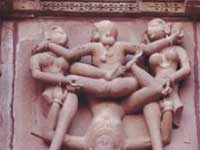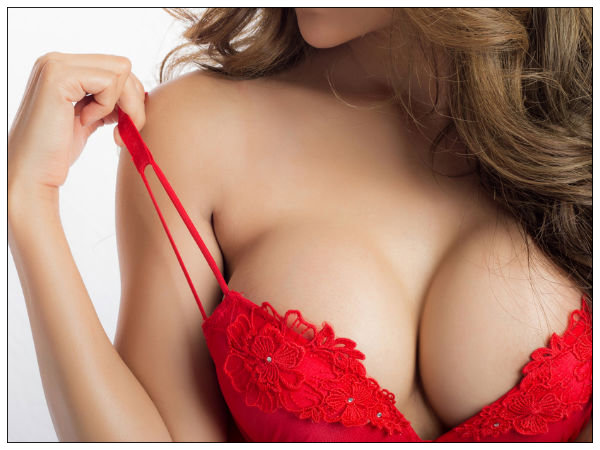
Art has been the prominent form of expression from the very pre-historic period. Paintings, wordings, sculptures etc... helped human beings to materialise his various emotions and thoughts. Through these different forms of art he depicted his culture, creativity, state of mind and sexuality. If taken a close look to the existing sculptures, we can see that a majority of them shows sexuality than any other emotion. Especially in Indian sculptures sexual forms dominate than anything else. Even in the temples we see sexual sculptures in huge numbers.
In Hindu tradition, all expressions are manifestations of supreme divinity, 'Paramatman'. Ancient Indians thought that the appropriate use of sex was an art. Perhaps that's why they called pleasure girls as artists. Many of these pleasure girls treated their profession as a form of devotion to God, and refined it as an advanced fine art. Sakti in Hindu tradition is a feminine force of creation. Sex was not viewed with any revulsion or perversion. It was simply viewed as a natural behavior. Thus found its place in all the art forms including sculptures.
[an error occurred while processing this directive] In ancient times churches and temples were places where sculptures were commonly used. In both the temple and church we can find sculptures with lavishly expressed sexuality, of course not with the same intentions. Hinduism was more lenient and liberal towards sex even in their scriptures. Sexuality was never considered as an act to be limited for procreation, but often celebrated as a way of recreation. Even the temples were used as places of prostitution and there were pleasure girls living in the temples itself called 'devadasis'. Thus art forms also treated sexuality so liberally and many of the temple sculptures pictured the celebration of sex in various forms. Khajuraho temple is the best example for temple sexual sculptures.
Even though present time Christian churches stay off from sculptures, ancient churches had beautiful carvings in them. In Romanesque sculpture there was an appreciation of beauty and a depiction of the dangers of sexual desire and lust. The arts probably came from the dilemma people were facing in dealing with their sexuality and morality at the same time, and that some of the sculptures seem to be a vehicle for moral instruction. In Christian philosophies women were often portrayed as the agent of seduction and lust, thus in the sculptures women were shown with serpents, which symbolized condemned sexual desires. Some of the sexual sculptures were meant to warn against lust and show a possible punishment from god by portraying naked woman having her breasts attacked by serpents.
Apart from the temple sculptures, other carvings also had glimpse of sexuality in them. Middle age sculptures pictured sexuality in a direct way by depicting sexual postures and naked men and women; while modern sculptures most of the times use a symbolic approach by picturizing symbols instead of naked people or sexual postures. Picasso, Michelangelo and Rodin used sexuality in many of their art works. "Women in Tub," a porcelain sculpture by Jeff Koons, is a sample for these sexual sculptures.
When sculptures present sexuality, they are not to be seen as erotica or vulgar art. But sexual sculptures are just the depiction of a natural phenomena, the sexuality. They, in fact, represents the divine aspects of sexuality and proclaims it's role in preserving human life and culture on earth.



 Click it and Unblock the Notifications
Click it and Unblock the Notifications









